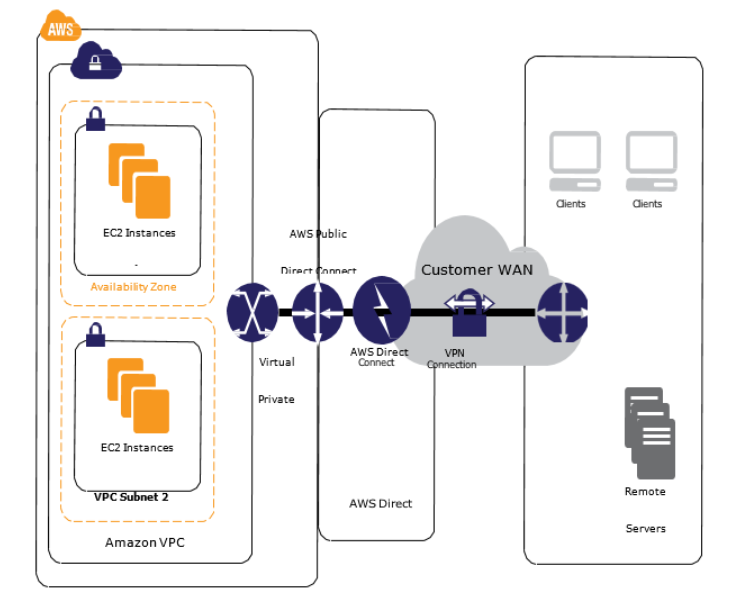Send Large Amount of Encrypted Data to S3
Question
A company has a requirement to send a large amount of data that needs to be ingested into S3
And the data transfer needs to be encrypted.
How could you accomplish this?
Answers
Explanations
Click on the arrows to vote for the correct answer
A. B. C. D.Answer - C.
AWS Docs Provides the following:
####
You can use HTTPS (TLS) to help prevent potential attackers from eavesdropping on or manipulating network traffic using person-in-the-middle or similar attacks.
You should allow only encrypted connections over HTTPS (TLS) using the aws:SecureTransport condition on Amazon S3 bucket policies.
####
Please refer to page 462 of the below AWS Docs link on the title "Enforce encryption of data in transit" :
https://docs.aws.amazon.com/AmazonS3/latest/dev/s3-dg.pdfOne can utilize an AWS VPN over AWS Direct connect to get all low latency and encrypted connection features.
The below diagram from the AWS Documentation shows the architecture of such a setup.
Option A is incorrect because this alone with not guarantee encryption of data in transit.
Option B is incorrect because this alone will not guarantee encryption of the connection.
Option D is incorrect because this using HTTP does not encrypt data in transit.
For more information on AWS Direct Connect plus VPN, please refer to the below URL:
https://docs.aws.amazon.com/aws-technical-content/latest/aws-vpc-connectivity-options/aws-direct-connect-plus-vpn-network-to-amazon.html
To send a large amount of data that needs to be ingested into S3, and ensure that the data transfer is encrypted, the following methods can be used:
C. Use HTTPS (TLS) for encryption of data in transit:
HTTPS is a secure version of HTTP and is used to encrypt data in transit. This protocol uses Transport Layer Security (TLS) to encrypt data. When using HTTPS, the data is encrypted from the source to the destination, providing end-to-end encryption. The data is encrypted using a public key that is exchanged between the client and the server. HTTPS is widely used for secure web communication and can be used to transfer data securely to S3.
A. Use an AWS VPN Managed connection:
AWS VPN is a managed VPN service that allows you to create a secure and private connection between your on-premises network and your VPC. This connection is encrypted using the Internet Protocol Security (IPSec) protocol. AWS VPN can be used to encrypt data in transit when transferring data to S3 from your on-premises network.
B. Use an AWS Direct Connect connection:
AWS Direct Connect is a dedicated network connection between your on-premises infrastructure and AWS. This connection bypasses the public Internet and provides a more secure and reliable connection. AWS Direct Connect can be used to transfer data to S3 securely.
D. Use HTTP for encryption of data in transit:
HTTP is an insecure protocol and does not provide any encryption. Therefore, using HTTP to transfer data to S3 is not recommended if the data needs to be encrypted.
In summary, the recommended method to send a large amount of data that needs to be ingested into S3 and ensure that the data transfer is encrypted is to use HTTPS (TLS) for encryption of data in transit. AWS VPN and AWS Direct Connect can also be used to encrypt data in transit when transferring data to S3, but these options may not be as suitable for all scenarios. Option D is not recommended as it does not provide any encryption.